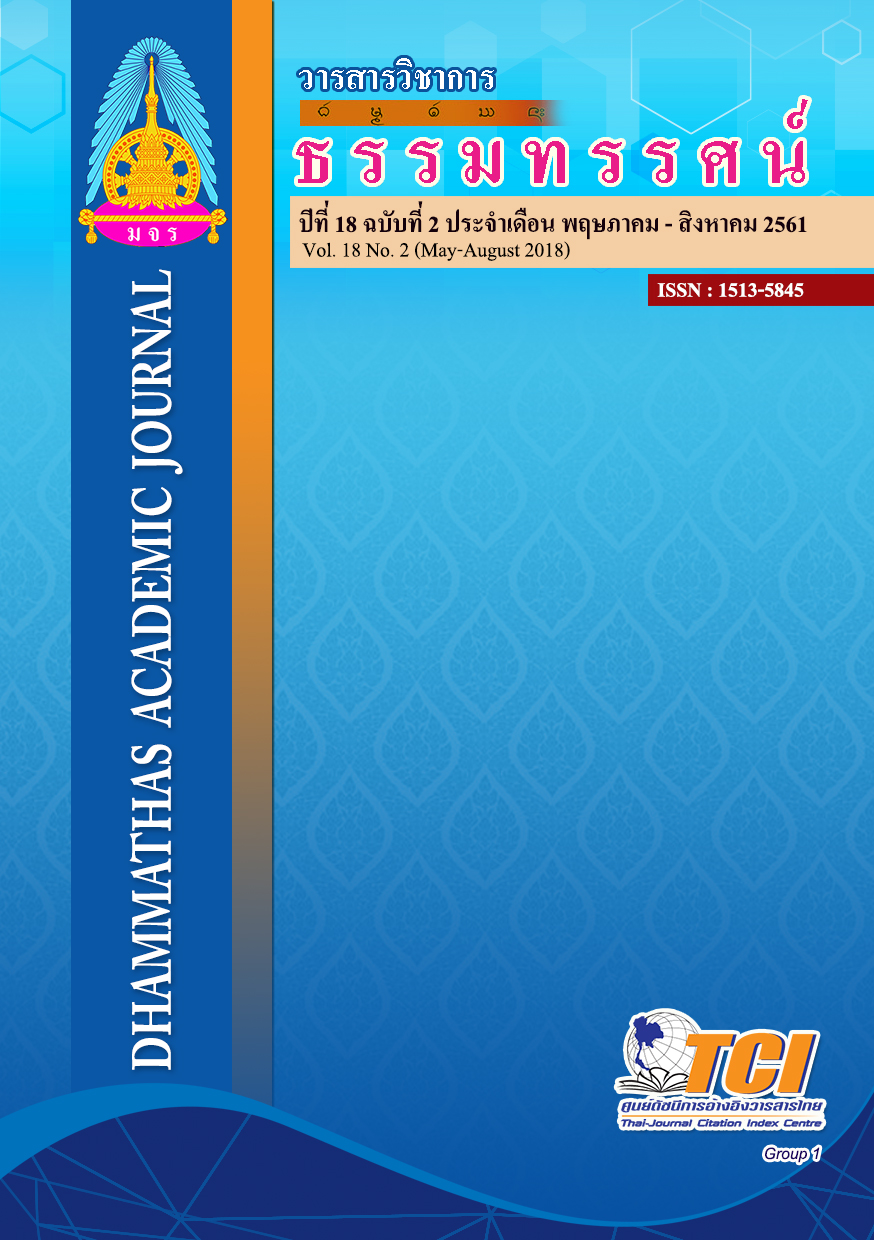The Combination of Buddhist Mechanisms for Creation of Peaceful Co-existence Culture in Asean Community : a Case Study of Thailand and Indochinese Countries and Myanmar
Main Article Content
Abstract
The main objectives of this research are: 1) to study geo-culture, identity and history of relationship of Buddhism in ASEAN community, 2.) to study establishment and development of linkages of activities coordinated with the people’s relationship under the framework of Dhamma principles and practices of Buddhism in ASEAN community, and 3) to find out the cooperation in peace creation between Buddhism mechanism and other religions in ASEAN community. Research and Development approach was employed in this study. Data were collected from in-depth interview, focus group discussion and experts meeting from 68 key informants who were Buddhist monks, government officials, experts and ordinary people. The main objectives of this research are: 1) to study geo-culture, identity and history of relationship of Buddhism in ASEAN community, 2.) to study establishment and development of linkages of activities coordinated with the people’s relationship under the framework of Dhamma principles and practices of Buddhism in ASEAN community, and 3) to find out the cooperation in peace creation between Buddhism mechanism and other religions in ASEAN community. Research and Development approach was employed in this study. Data were collected from in-depth interview, focus group discussion and experts meeting from 68 key informants who were Buddhist monks, government officials, experts and ordinary people.
The findings of this study are as follows:
1. The development of Buddhism in Lao PDR, Cambodia and Myanmar has evolved along with state power i.e. king power. Although the countries have progressed to the points of political change, but the people’s ways of life still connected to Buddhism. The Buddhist monks have yet played important roles as spiritual leaders under restrictions determined by state power. Buddhist ways have practically softened the existing strict governance system.
2. The continuation of relationship of people under the framework of Buddhism in ASEAN community has carried out through Buddhist activities such as food offering to Buddhist monks in the End of Buddhist Lent Day of Thai and Myanmarese Buddhists in Maesot district, Tak province and Myawaddy, New Year’s Eve Chanting activity of Thai and Cambodian Buddhists in Aranyaprathet, Sakaeo province and Poipet, and Vesak Day celebration by Thai and Laos Buddhists in Nongkai province and Vientiane. These have brought about creative relationship in practical ways of people in two countries. This relationship has healed repeated sorrow history of people in two countries. In addition, the merit making community was set up, resulting in economic association through Buddhist activities overlapping legal state borders. The border Checkpoints were freely opened during the period of Buddhist activities organization, resulting in reducing degree of alienation among two countries people and creating a true brotherhood.
3. The pattern of cooperation creation between Thailand and neighboring countries through Buddhism mechanism consisted of doctrine, rites and rituals, and institutions. All these have to get supports from three important partners, namely, government, private and public sectors, through organizing these activities: 1) Buddhist important Days, 2) two countries 9 temples worship activities, 3) Songkran festival, 4) annual events based on local traditions, and 5) cooperation of educational and Buddhist affaires. As the result, it existed establishment of international Buddhist cooperation for the uniqueness of people in ASEAN community. The organization of religious activities are regarded as model and able to create relationships and co-existence among people in same and different faith such as Buddhist activities in Maesot district, Tak province and Myawaddy, Myanmar; activities organized by Thai and Laos Buddhists. However, Asalhapuja celebration managed by Thai and Cambodian counterparts got less success. The main causes of successful and unsuccessful activities organizations in each area depend upon participation of people in two countries, initiative persons in both countries who mainly coordinate in designing and organizing activities. The most important principles of co-existence among interfaith people are the foundations of thoughts and principles of each religion like Five Precepts of Buddhism, Ten Commandments of Christianity, Six Beliefs and Five Practices of Islam, and Manavadharma of Hinduism. In order to have mechanisms to design activities and make policy proposals to the related organizations, it is suggested to set up and appoint the ASEAN cultural relation coordinators as public mind network from various religions in border areas for the duties of creation of cultural cooperation.
4. The application of religious mechanisms as tools in building relationship has truly brought about the peace as evident in organizational level like the two states partnership organization has cooperated in making religious activities plan and projects. There is upgrade of cultural capital for tourism promotion in order to uplift the people’s quality of life. In community level, it reveals that people have collectively participated in organizing religious activities. This brings about the friendships among the people of different religions and countries.

